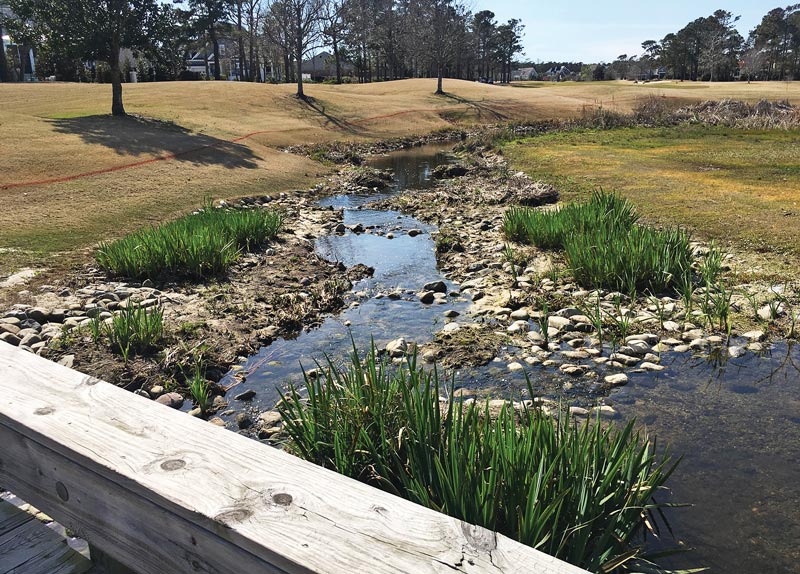
Photo by Alayne McKnight
Previous research has shown plant-pollutant bioremoval capacity may differ across species and/or pesticides. Research is needed to identify plant species best suited to mitigate pesticide off-target transport when establishing and/or renovating riparian buffers or stormwater wetland areas in urban and rural settings.
Greenhouse research was conducted to evaluate the capacity of three terrestrial plant species — switchgrass (Panicum virgatum), blueflag iris (Iris versicolor) and broomsedge (Andropogon virginicus) — to remove atrazine (herbicide), azoxystrobin (fungicide) and imidacloprid (insecticide). These plant species were chosen based on prior phytoremediation studies and the plants’ tolerance to common herbicides.
Plants were established in unique containers (78.5 square inches) consisting of a Candor sand (92% sand, 4% silt and 4% clay) and treated with atrazine (1.8 pounds a.i./acre), azoxystrobin (0.49 pound a.i./acre) or imidacloprid (0.36 pound a.i./acre). At 28, 56 or 112 days after treatment, unique plants were harvested and sectioned into above- and below-soil-surface portions for residue analysis. Four soil cores were collected from each container to a depth of 3 inches and segmented into soil depths of 0 to 1 inch, 1 to 2 inches, and 2 to 3 inches for residue analysis.
Results suggest switchgrass, blueflag iris and broomsedge continuously remediate all three pesticides through 112 days after treatment. Azoxystrobin was remediated at a higher rate than atrazine or imidacloprid. Information from this research will aid in the construction of a mitigation plan for urban and rural landscapers to minimize possible risk of off-target pesticide movement.
— Alayne McKnight, M.S.; Travis Gannon, Ph.D.; and Fred Yelverton, Ph.D., North Carolina State University
Editor’s note: An earlier version of this summary was published in the 2019 ASA-CSSA-SSSA Meeting Abstracts, ASA-CSSA-SSSA, Madison, Wis.
Teresa Carson is GCM’s science editor.